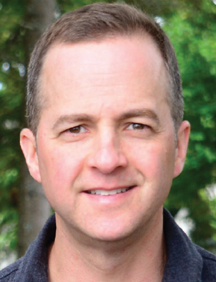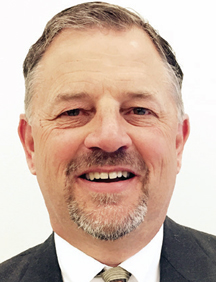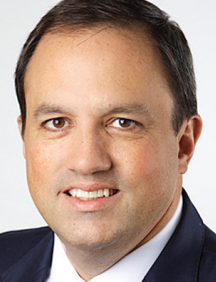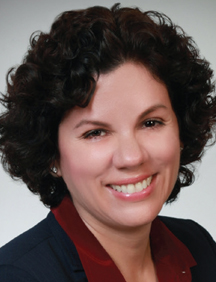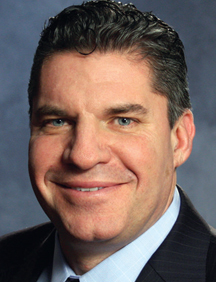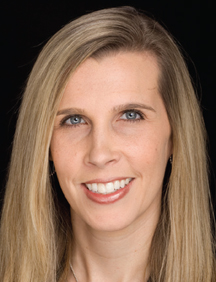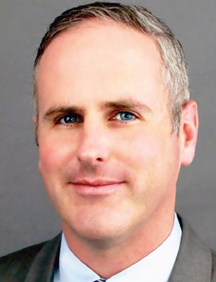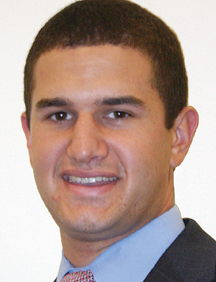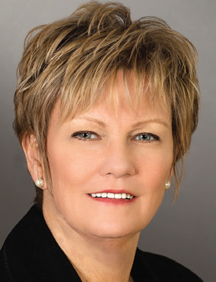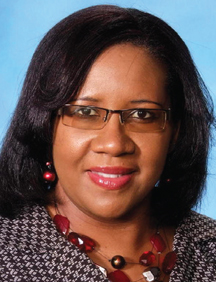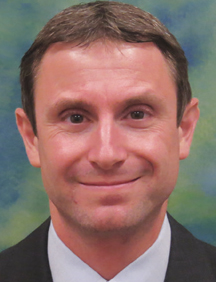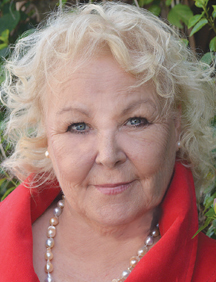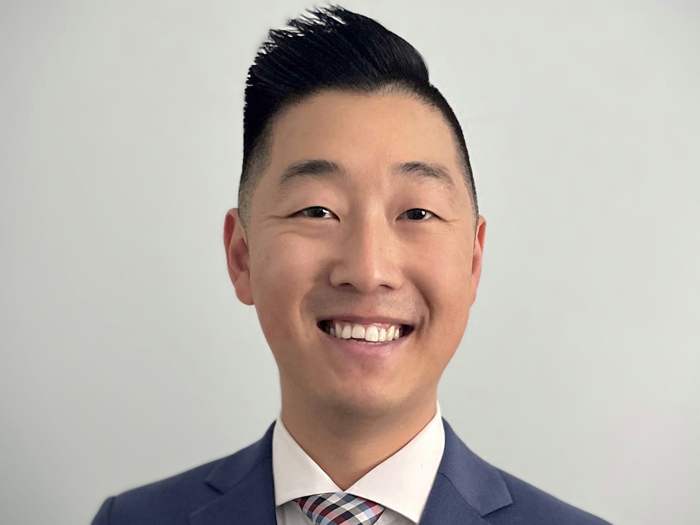2015 Power Broker
Health Care
Part of the Mission
Damon Bendesky likes to think that he “humanizes” his clients’ risk for the underwriters’ sake.
He makes the underwriters appreciate the noble aims of the health care organizations seeking insurance, who are, after all, saving and improving human lives.
Because of Bendesky and his deeply relational approach to brokering, underwriters come to feel a part of that mission.
For the clients, Bendesky’s specialty is getting the directors and officers coverage they need.
Peggy Klecha, director of risk management at the Pocono Medical Center, has witnessed Bendesky broker for her multiple employers for almost two decades. She’s worked closely with him for the last six years, with him coming in during the last renewal, “sharpening” their D&O coverage.
For another longtime client, a major pharmaceutical company, Bendesky accomplished something “pretty much unheard of in the D&O world” — a multiyear deal, along with other atypical requests for favorable coverages. At the end, it was clear that Bendesky represents not just Aon but the client.
It’s that loyalty and respect that stand out to one hospital risk manager when she recounted a story about a D&O claim that Bendesky assisted with. It was a complicated D&O case, involving a settlement and legal bills, a carrier asking for money back and a risk manager hoping to still renew with that underwriter.
Complex? Just send in Bendesky.
Doing What’s Best for the Client
Say you are one of the largest primary care networks in the United States, and you have a new CEO. You’re big and getting bigger, and your insurance program is at risk of ending up a patchwork quilt.
Charlie Black’s job was to make it all work — to create a situation that would allow the organization to move its professional liability coverage into a captive, while delivering a two-year stop-loss program for the provider’s patient population.
From the perspective of that organization’s CEO, Black was “a guy who’s really kind of working against himself,” since he was being incentivized to build a program that would keep the organization from going out to renewal in the traditional market every year.
Black devised a way for half of the organization’s doctors, who had been on claims-made med-mal coverage and thus have tail risk, to no longer require aggregate tail risk coverage if and when the organization goes to the captive.
The CEO and the rest of the organization entrust their risk management program to Black, including the recent addition of cyber liability.
“He goes out of his way to do what’s best for a company, not himself,” the CEO said about Black.
Another corporate risk manager discussed how Black helped place coverage for acquired doctors’ clinics. “As new risks are uncovered and discovered, with a simple phone call to him, he says, ‘Let’s break this down and see what’s going on,’ ” the risk manager said.
Knowledgeable Assessments and Placements
Risk management professionals are trying to keep insurance programs together as employers grow through mergers and acquisitions. Luckily, brokers like Kevin Junod are available to assist.
One specialty health care management company acquired four companies in one year while expanding its operations internationally.
Junod and his team assessed the exposures and risk management programs of all of the acquired firms, then shut down the old programs and transferred them to the new program.
“This was no small task and it was performed in a seamless and very cost-effective manner,” the risk manager said.
For Kindred Healthcare, another client, Junod assisted its home health/hospice division in embarking on a period of rapid growth. Over 18 months, the division completed 13 acquisitions and considered several others. Junod and his team provided due diligence on each.
“I know that I can count on Kevin to provide me with knowledgeable assessments and insurance placements that best fit the needs of the company,” said Nita Blevens, director of workers’ compensation and casualty insurance at Kindred Healthcare.
Even regional hospitals, like Pennsylvania’s Doylestown Hospital, are growing and their risk profiles are changing. They called in Junod to rethink their entire program.
“Not only is Kevin a good insurance broker … he and his team have done such incredible work for this hospital that I can’t imagine a broker doing more yeoman’s work,” said Steve Day Jr., counsel and director of risk and privacy officer.
Putting Clients First
Advocacy and innovative programs underlie Giselle Lugones’ work in the health care industry.
“I remember thinking, she is sort of like our lawyer,” said the general counsel at a Florida hospital. Lugones is the type of broker, she said, who puts her own financial benefits at jeopardy for the benefit of her clients.
In addition to solving risk issues around the hospital’s sovereign immunity, Lugones brought an innovative program to the table as the hospital built a new wing — a contractor-owner controlled insurance program — that bridged the interests of the hospital’s risk team and its facilities staff (who wanted to maintain strong ties to the contractor).
Another risk manager at a South Florida-based teaching hospital admitted not having done a broker RFP in a dozen years or more, given what Lugones has delivered.
And then there’s Steve Adler, a former broker himself and current CEO of Physician Indemnity Risk Retention Group, who called Lugones “the best broker I have ever run across in the industry, and I don’t say that lightly.”
Lugones was able to save the RRG nearly $1 million by exchanging its previous reinsurance for an adverse development policy with equal protection. She also negotiated a cut-through policy, ensuring that reinsurers will remain on the risk if the RRG goes belly-up.
“To be able to accomplish those things demonstrates to me what her clout is in the marketplace,” Adler said.
Cost-Saving Solutions
Public hospitals are like most other public entities these days: cash-strapped. But brokers can come to the rescue by producing savings from insurance programs reaching into the millions.
Rob Marshall has accomplished that feat time and time again.
For one New York-based public hospital, for instance, Marshall noticed it was spending $6.5 million each year on separate med-mal coverage for employed physicians.
Given the financial strength of the self-funding hospital, Marshall determined it could do the same for the employed physicians.
After an actuarial study, the hospital moved the exposure into a captive and lowered its total cost of risk by more than $1 million.
For a New York-based university hospital in the process of building a million-dollar ambulatory care center, Marshall scored two insurance wins. First, he negotiated a more favorable contractor-controlled insurance program, reducing costs by hundreds of thousands of dollars. Then he came in with a builders risk insurance quote that was $1 million below budget.
These days, to compete in the ACA landscape, many hospital systems are in “merger mania.” A risk professional at one such hospital system commended Marshall for his efforts at allowing his employer to complete a portfolio transfer of the insurance programs of two acquired facilities, most importantly, their medical-malpractice liability.
Brooklyn Hospital Center CFO Joseph Guarracino said Marshall comes to him with solutions, issues to be alerted to and thought leadership. Where Marshall goes, Guarracino goes, the executive said.
Responding to Ebola Outbreak
The Ebola scare that struck the United States in the fall of 2014 was a wake-up call for hospitals.
Laura McMahan leaped into the terrifying unknowns of that crisis for her clients from practically day one.
Stacy Prince, executive director of risk management and patient safety at Adventist Health System Inc., said McMahan set aside the time to help identify gaps in current coverage and how that coverage would respond in the event of an Ebola-related event, including lines that Marsh did not broker at the time.
One takeaway was that the system could seek enhancements at its next property renewal to improve business interruption coverage.
In Prince’s mind, McMahan did not have to do this. Most other brokers probably would have just sent along their firm’s latest white paper on the topic.
A week after the phone call with McMahan, Prince had a call with his corporate risk management board to share what he had learned. It opened his board members’ eyes, too.
“That allows me to show value to the organization, and I wouldn’t have been able to do that to the same extent without Laura and the Marsh team,” Prince said.
Diana Free, director of risk management at Gwinnett Medical Center, said that, “Who wants to come to the hospital that the nightly news is showing with the Ebola patient?” even though it is clear that hospitals have no control over who walks into their facilities.
Delving into the business interruption and biological outbreak implications, in accordance with the information she learned after McMahan approached her, was a great help she said.
Understanding the Inner Workings
Alex Michon will sometimes spend all day reviewing coverages with clients across the health care spectrum, from insurers and professional associations to biotech firms.
Lisa Fields, deputy general counsel at Vision Service Plan (VSP), prized the deep dive she had with Michon about cyber security.
Michon helped her identify the organization’s exposures. He sat down with her IT department, VSP’s senior executives and risk management team, and looked at how much coverage they needed.
The result was a well-structured program that allows VSP to manage its own risk but have significant coverage in event of a breach.
Bob Spinelli is CFO of the California Dental Association, whose portfolio includes an insurance company, a brokerage, a foundation and a multi-story business property. Michon took the time to understand all the inner workings of the organization.
“He listens to us, he knows our industry and us as a client extremely well,” Spinelli said.
Jim Schutz, CEO of Oculus Innovative Sciences, leaned on Michon from the time the firm was a startup to its current development as a microcap company seeking to grow much larger.
“Alex really understands health care — from the hospital and clinic level to large, multinational companies — which has been valuable for us,” Schutz said. “I recommend Alex to other health care CEOs across the country as ‘the best service provider (and insurance broker) I’ve worked with.’ ”
Insurance Cures for Physician Practices
Physician practices still exist in the United States today, despite the ACA-fueled drive toward hospital systems gobbling them up. But even physician practices are in a bit of a merger and acquisition spree.
Lee Newmark helps these physicians, particularly in specialty practices, benefit from insurance innovations usually reserved for bigger groups.
For a growing national radiology practice with 100-plus physicians in more than 10 locations around the county, Newmark managed to unify the medical professional liability insurance programs for each of the practices into one program.
The move yielded a 25 percent premium savings, as well as cost reductions in administration and loss control from the standardized approach.
What impressed the director of corporate development for the practice was Newmark’s ability to do what other brokers claimed wasn’t possible in the time available. The director needed the unification of the coverage to occur in one and a half months. Newmark got it done.
Mary Hoyer, practice manager at Northwest Heart & Vascular, has been so impressed with Newmark as a broker and a person that she has said she wished he were her son.
One group of specialty physician groups was able to integrate with Newmark’s help. With more than $600,000 in premium savings, the group can focus less on unifying their insurance programs and more on their business — revolutionizing how specialty medicine is delivered.
Innovative Financial Protection
It says something that a risk manager will credit a broker’s work even when that work led to him essentially losing his job.
Ted Schlert had been chief risk officer at Catholic Health East (CHE), where he worked with Donna Regan for 10 months as she helped both CHE and Trinity merge and integrate their insurance and risk programs.
That included merging two captives, which possessed a combined $600 million in assets.
Regan was also tasked with helping to conceive, build and launch an innovative “financial protection program” that was part retained risk, part commercial insurance and reinsurance, and part secret sauce.
“The whole idea is to protect the organization’s balance sheet,” Schlert said.
Raeann Shepherd, director of risk finance at what is now the consolidated company, Trinity Health, said the result was “beyond an integrated insurance program” and the “first one in the industry.”
It finances a multitude of exposures, from workers’ comp to provider stop-loss, from general and management liability, to all health care-related exposures. Regan traveled across the country, and to London and Bermuda, to bring underwriters on board.
“In the end, by the time we got it done, we were overbooked [in willing underwriters],” Shepherd said. Underwriters later told Shepherd they wouldn’t have joined had it not been for Regan.
As part of the merger process, Schlert did not remain, but has since “landed on his feet,” as senior vice president of risk management at Meridian Health.
A Background in Underwriting
Leave it to an underwriter who used to be a broker to appreciate the amazing accomplishments of a broker who used to be an underwriter.
Kareen Richardson, a former underwriter, proved her skill set in the past 18 months when she came to the rescue of a health system that was acquired by a massive peer system, on its way to becoming one of the largest Catholic health systems in the United States.
The risk manager at the center of consolidating multiple insurance programs soon realized the traditional insurance market couldn’t meet the new organization’s needs, particularly when it came to operational, financial and enterprise risk.
Richardson and her Integro team had to essentially take a “blank sheet of paper,” as the underwriter put it, and take the new program to market — without any historical data to help price the new approach.
“It was a three-month marathon negotiating all the details of the contract, addressing and challenging the market,” the underwriter said.
Underwriters have said that Richardson’s temperament and character explain why she’s so accomplished. Words like “perseverance” and “hard-working” came to mind.
“Her underwriting background was very useful in helping both the client understand the market’s need for information as well as helping the market understand the client’s ultimate goal,” said another underwriter.
Advocacy and Education
Stephen Ruisi is yet another broker who came to the rescue of risk managers during the M&A spate among health care organizations.
He was there for Charles Vollmoeller when the insurance and risk coordinator at Westchester Medical Center learned his organization was acquiring the former St. Francis hospital, a 300-bed facility in Poughkeepsie, N.Y.
The acquisition was set for May 2014 and Vollmoeller’s team had a very short period of time to integrate insurance programs, With Ruisi’s help, the in-house risk management team was able to complete its due diligence.
Several accounting and legal firms were involved, and St. Francis was in financial difficulties at the time. Ruisi helped produce a “beautiful” submission for underwriters that allowed them to roll in the acquired hospital’s exposures into Westchester’s program.
“Had it not been for Steve … I don’t think this would have worked. I think we would have had big problems [by the deadline],” Vollmoeller said.
Ruisi isn’t your “typical broker-salesman,” Vollmoeller said. He has a very technical background in claims and underwriting, which Vollmoeller and other risk managers find of great service.
“He always goes back to the beginning and explains the situation, setting up the discussion per se,” is the way another client, a financial executive at a prominent health institute, put it.
For this client, Ruisi was pivotal in structuring an “integrated risk program” to measure and balance the risk that the organization retains internally through a captive.
Meeting Big Expectations
Some of the most creative things happening in health care risk management, it appears, are happening in Hamilton.
That makes sense, given the overall sophistication of health care risk managers like Sousa, their use of captives and risk retention, and their reliance on specialty insurance and reinsurance players.
For one large publicly traded acute-care hospital network, she delivered on an “out of the box” type of arrangement, which the organization’s risk management executive described as a type of excess liability layer that responds to integrated occurrences only.
The impetus was a concern that the organization could have multiple claims related to one incident. Under the new arrangement, loosely defined, the organization would have all claims related to one incident subject to only one self-insured retention, with all the limits responding as one as well.
Sousa devised a way to make it work for her client; in fact, she was ingenious enough to conceive of four different options to make this integrated occurrence coverage work.
The response to it from the primary underwriter, XL Bermuda, and the general health care risk manager community was so positive, the product is now available to other organizations.
How was Sousa able to succeed in such a small town, with such big expectations from risk managers?
“You just see that they all [underwriters] respect her and her knowledge,” said the risk manager.

